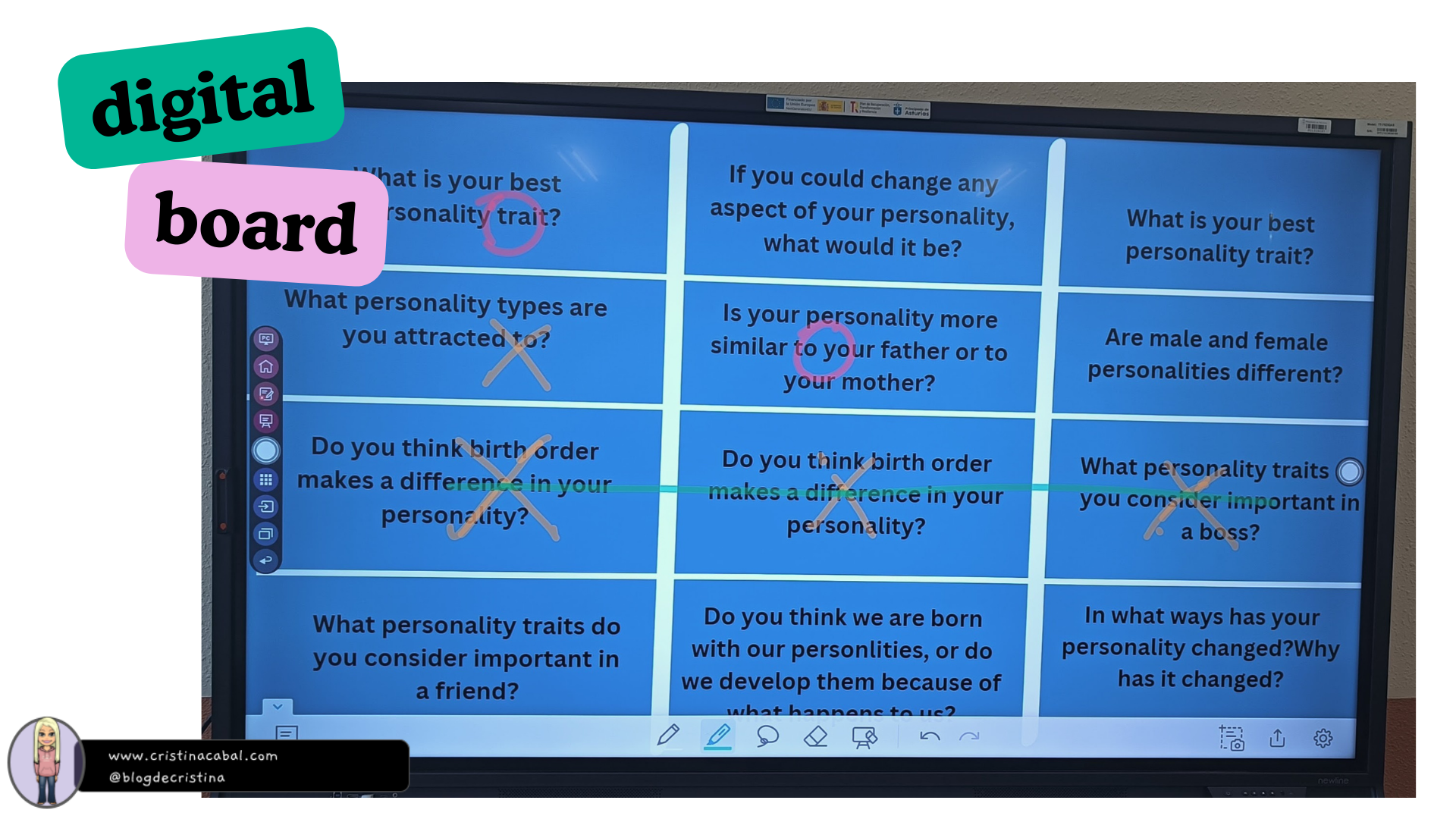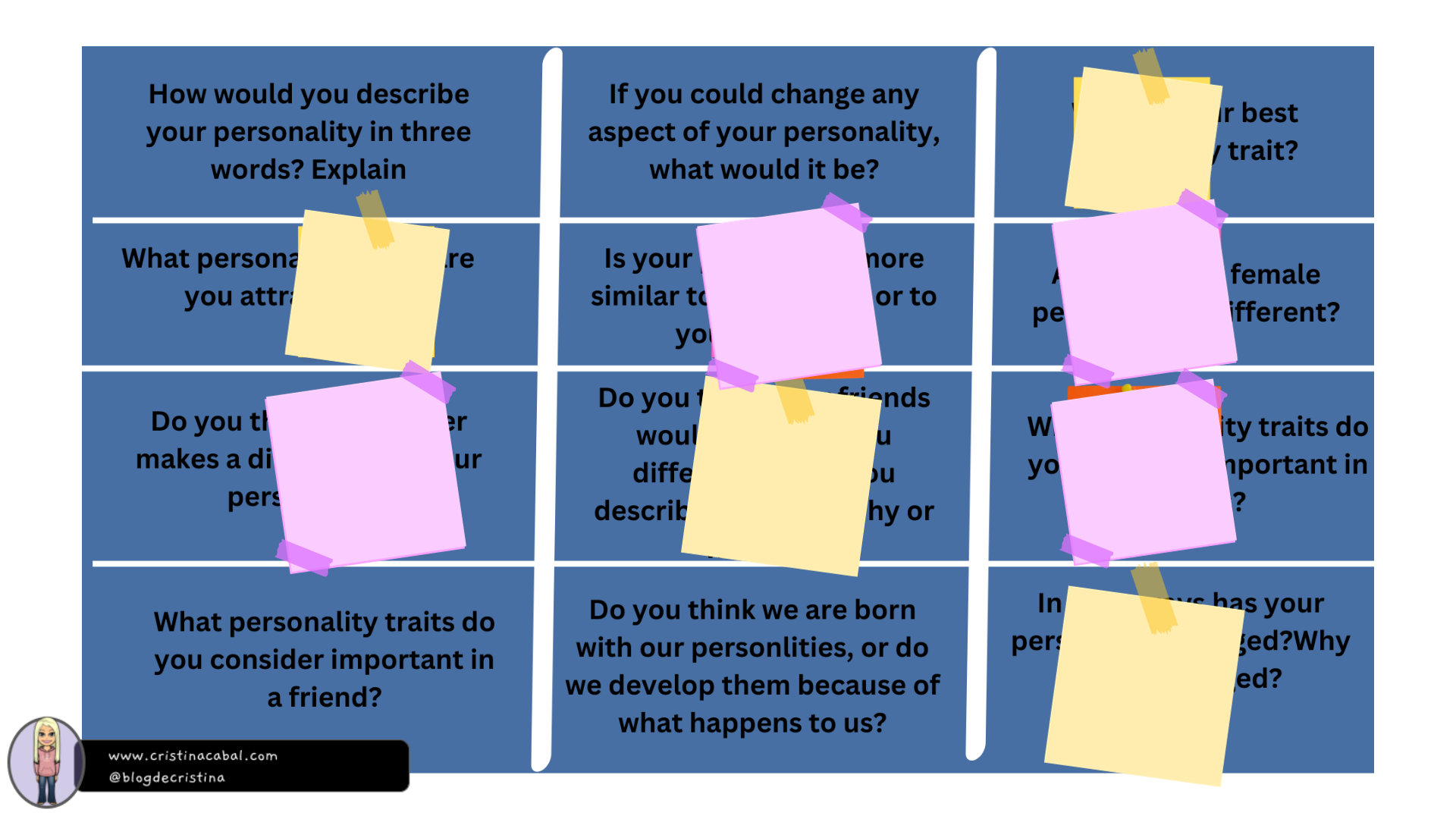Today, I am sharing with you an activity that’s as fun, as it is effective. Drumroll, please… introducing Tic Tac Talk with a Fun Twist!
Picture this: the traditional Tic Tac Toe grid is on the board and each square contains a conversation question related to the lesson or topic at hand; in my case, it was questions related to personal identity. If you pay attention to the picture of my board, you will see another difference; instead of the traditional 9-square grid, I designed a 12-square grid. More questions. More talk. More fun.
Another difference? They play in teams. Two teams: Xs and Os. And everybody talks here.

How to go about it. Let’s pretend Os start.
- Pair up students; let’s say Student A chooses O and Student B, X. From now on, they will be called Os and Xs
- Display the grid with the overhead projector. Less paper, more trees.
- Ask a representative of Os to choose a square and read the question aloud.
- Tell Os they have 90 seconds to talk to their buddy X answering the question. Encourage students to use target vocabulary. What do Xs do? They listen. Not for long. Soon, it will be their turn to speak.
- Monitor the time and signal when the time’s up.
How Os win the Square

- The teacher chooses a random O as representative of their team. (a different one each time, of course)
- To win the square containing the question they have just answered, this representative will have to speak for 45 seconds, trying to deliver a continuous articulate monologue without repeating himself. If they manage to do so, their team, ie, Os, will have their icon written on the square but if they make pauses, repeat information or talk nonsense then the teacher, will a lot of drama and an apologetic face, will not grant them the desired square.
Now, it is Xs’ turn.
Who wins?
The rules for the traditional Tic Tac Toe apply here, too. Players take turns placing their “X” or “O”. The goal is to be the first to make a row of three of your marks, either vertically, horizontally, or diagonally. If all the boxes are filled up and no one has three in a row, it’s a tie. Needless to say, players can strategize to prevent the other players from getting three in a row, which adds to the fun.
How did I mark the Xs and the Os?
Remember that the grid is displayed on the board. I played the game with two different classes. In one of them, I had a digital board, so it was fun to draw the Os and Xs in different colours. In the other one, I used different coloured sticky notes. It was a colourful display and brightened up the whole board.

Here’s the grid with the questions I displayed in class
Tic Tac Talk by cristina.cabal




